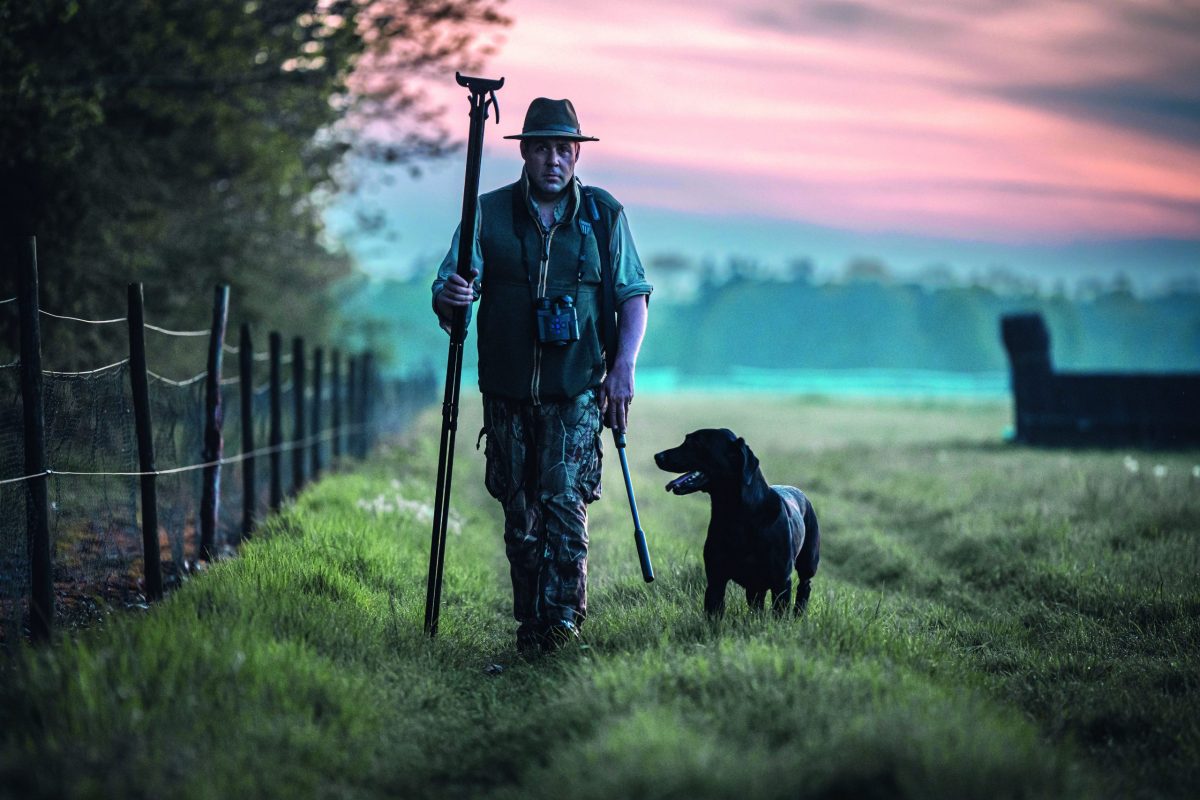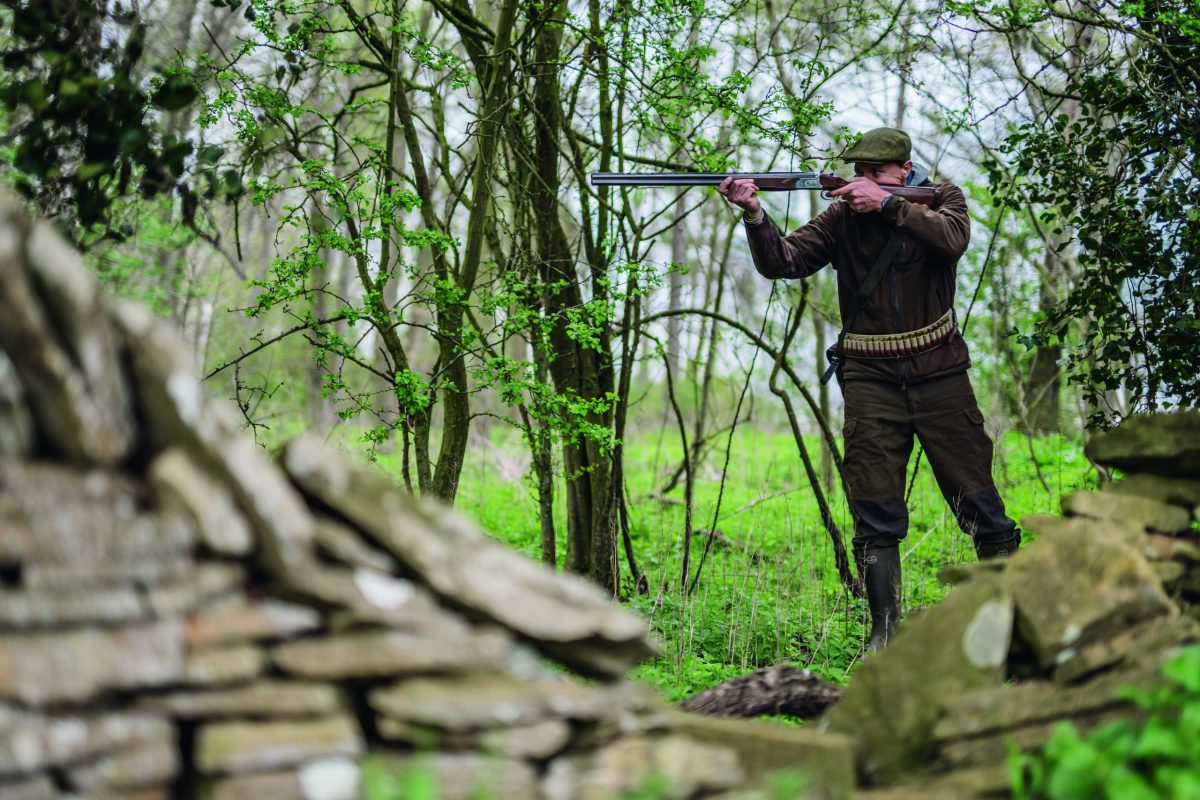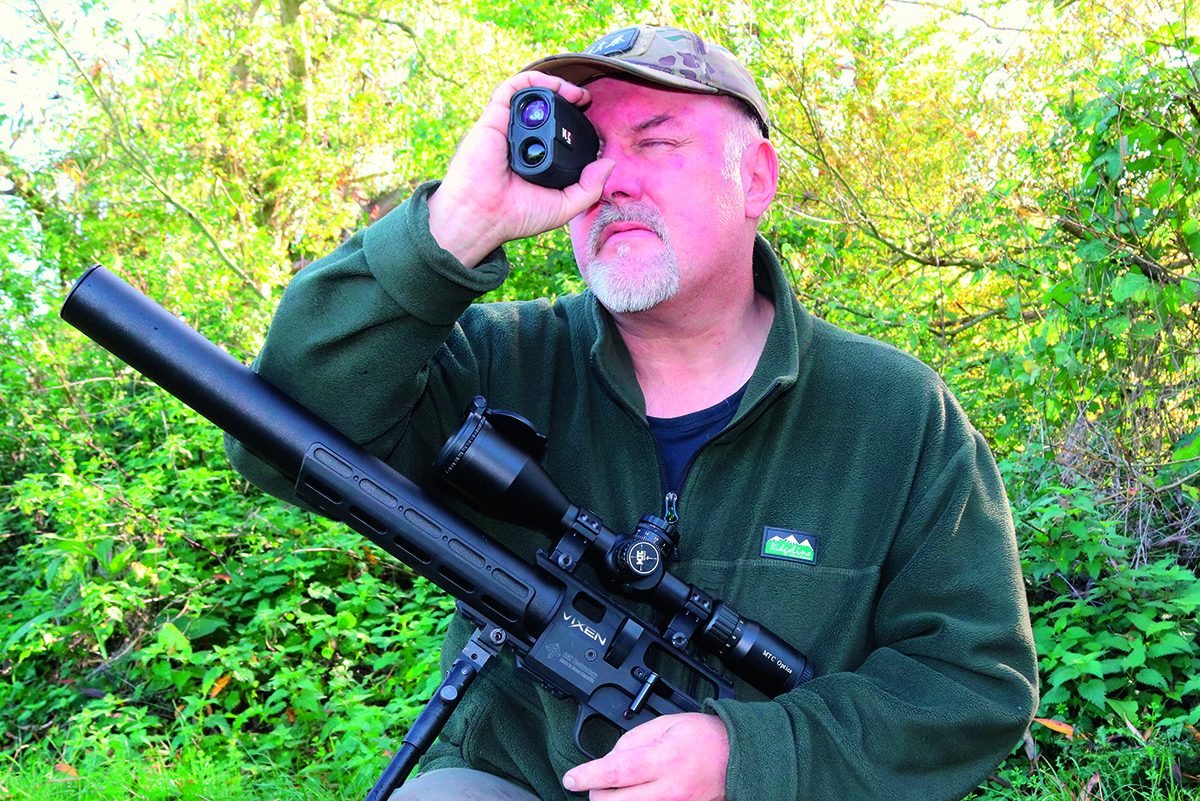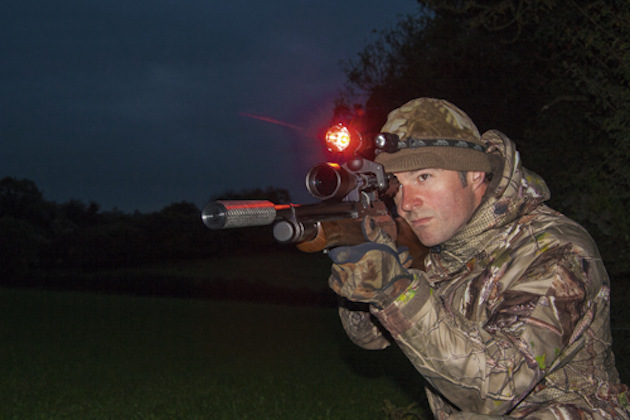Rabbiting tips for the summer months
With the crafty coney damaging turf and crops, a change of tactics is needed to keep reducing the local population over the warmer months

Miles Malone and his trusty labrador follow the edge of the woodland to get into position for the evening’s action
The point-to-point course cut through the Suffolk countryside as a majestic swathe of green, the white railings and brush jumps marking the course. But I was not here to experience thundering hooves upon turf, I was on patrol for that great survivor: the humble rabbit.
The light, sandy soils of the area lend themselves to easy burrowing and dry warrens, so it is unsurprising that rabbits have made their homes here. Unfortunately, the turf of the racecourse is particularly tempting, and at any time many rabbits can be seen grazing choice young shoots. With this comes the scratching out of scrapes and burrowing, which undermines the course.
Without control, this damage to the manicured surface could lead to a poor footing for the horses, with potential catastrophe for both animal and rider. The high numbers are also causing extensive arable damage, so a campaign was commenced over the winter to reduce their numbers while also providing a ready source of meat.
Rabbits perhaps provide the greatest survival story of the British countryside. Their resilience in the face of pestilence and predation is remarkable. Not a truly native species, they were first introduced by the Romans, somewhat unsuccessfully.
A further introduction by the Normans in the 12th century resulted in the species gaining a solid foothold that, despite huge fluctuations in numbers over time, remains in place today. Escaping the man-made warrens that formed their initial homes in Norman Britain, they soon adapted, overcoming great odds to colonise much of the mainland.

There are rabbits aplenty on the track, and the creatures grow in confidence as darkness falls

Signs of burrowing are evident — a safety concern so close to the racecourse
By 1950 there was reportedly a population of over 100 million rabbits, but numbers crashed three years later following the introduction of the myxomatosis virus. Not even this epidemic sounded the death knell for the species. It is reported that the plague killed in excess of 99% of UK rabbits, but through adaptation and growing resistance this remarkable animal survived, and again thrived.
The latest misfortune for the population came in the 1990s with the emergence of viral haemorrhagic disease, reducing the population by over 40% and, in some areas, making rabbits again a rarity. Other places seemed to escape the worst effects and still have high numbers, such as this corner of Suffolk.
Evening ambush
My winter management routine has been night shooting with a silenced .22 rimfire with a night vision scope, in combination with thermal imaging binoculars to spot. This had been highly successful, with a steady harvest of rabbits to help keep the population in check. Now, with the coming of spring, the undergrowth has bloomed and getting close shots with this method has grown trickier. To adapt to the new circumstances, I planned an evening ambush of the rabbits as they ventured out on to the racecourse itself. This would necessitate longer shots, so I switched to my trusty .17 HMR.
I am a great fan of this calibre for vermin control, but the advantages it brings in flat shooting and deadly accuracy are traded against the loud crack it produces and the meat damage that ensues from the small ballistic-tipped rounds. As I was shooting for the table as well as population management, I would have to try for head and neck shots to minimise the carcass damage.
The falling sun was bright through the leaves, scattering patterned light upon the mats of bluebells below. Rabbits scuttled to nearby holes beneath dense brambles as I approached and, occasionally, one would brave the gauntlet and bolt across the ride ahead, tail bobbing.
Soon I was at the woodland edge; beyond lay the green, open expanse of the racecourse. A hitherto unseen rabbit lolloped away to cover. Another followed but hesitated, unsure of the danger. Raising upon its back legs, it elevated itself to work out the threat. Moving slowly, I brought the rifle to the sticks. Fortunately, I remained in the gloom of the woods and the rabbit could not make out my outline from the bright exterior. A sharp crack from the muzzle and the first rabbit of the evening was grassed.
Miles’ rabbiting kit list
Rifle
- Name: Ruger 77 synthetic in .17 HMR calibre
- Contact: vikingshoot.com
Ammo
- Name: Hornady 17-gr V-Max
- Contact: edgarbrothers.com
Thermal imager
- Name: Pulsar Accolade 2 LRF XP50 Pro
- Contact: thomasjacks.co.uk
Shooting sticks
- Name Viper-Flex Styx Elite
- Contact: viper-flex.com
Bolting for home
The report had let the neighbourhood know of my presence and distant rabbits could be seen bolting for home. A smaller rabbit, confused by the direction of the shot, stopped at just over 100m. I placed the crosshairs, controlled my breathing and squeezed the trigger: a miss, and the rabbit bounded away unharmed. A lesson learned; switching rifles can affect your shooting, and the heavier trigger of this .17 HMR, which I was less used to, had resulted in a pulled shot.
Rabbits are well adapted to avoid predators, be those foxes, hawks or the two-footed variety. They rely on their proximity to their safe warrens to prevent them becoming dinner.
To get to ground in time, they have highly attuned defences to sense danger: the shape of the skull and eye position enables 360-degree vision, sharp to any movement, and their hearing is sensitive, aided by independently moving ears, scanning for untoward sounds.
With sharp eyes, ears and noses to overcome, I decided to position myself behind a jump and set ambush. It was a fine evening and the light, warm breeze from the south-west blew towards me as I looked down the length of the course. I used the time to range find prominent features, allowing me to rapidly bracket shot ranges as rabbits appeared from the thick cover.
I did not have long to wait; one bounded out, looked around carefully and then started grazing. I remembered the heavier trigger-pull this time, and the shot reached its mark. A short wait followed, and another rabbit appeared. With my confidence growing in the rifle and a firm rest, the crosshairs sat firmly upon the target. A gentle squeeze of the trigger and the round began its flight. The rabbit leapt momentarily in the air, settling lifeless on the turf.
As the light faded, the rabbits’ confidence increased. They were coming out readily and pushing further on to the racecourse. I shot one or two from a jump, then, as things quietened, I moved on to the next, repeating the process. Soon the gamebag was bulging.

Miles uses the point-to-point railings for stability as he lines up a rabbit in the crosshairs
Part of the rabbit’s extraordinary survival is due to its fecundity; does are reported to have as many as eight litters a year with up to 14 kits in each. It is a dangerous world to be a rabbit, and despite sometimes reaching nine years of age, 90% die in the first year of life — and most of these in the first three months. These huge breeding numbers enable populations to bounce back quickly, overcoming seemingly disastrous odds.
With this in mind, the dozen rabbits weighing down upon my shoulder seemed suddenly immaterial. History has shown us that shooting alone will not reduce overall numbers, but it does allow targeted local reduction, protecting specific or vulnerable areas.
I walked back in the fading light towards the car, thinking of the rabbit’s journey through the ages. It has been fundamental in shaping our culture, traditions and even language. It has been a rich source of food throughout the ages, changing with the fashion of the time from luxury food, the preserve of the rich and noble, to ‘poor man’s chicken’.
It has forged our landscape, shaping the very countryside it was introduced to, and is now a critical conservation asset; the close-grazed grassland it produces can form essential habitat for rare lichens, mosses and butterflies. If rabbits were to finally lose this nine-century struggle and vanish from these shores, they would be deeply missed. In truth, they are far from humble.








